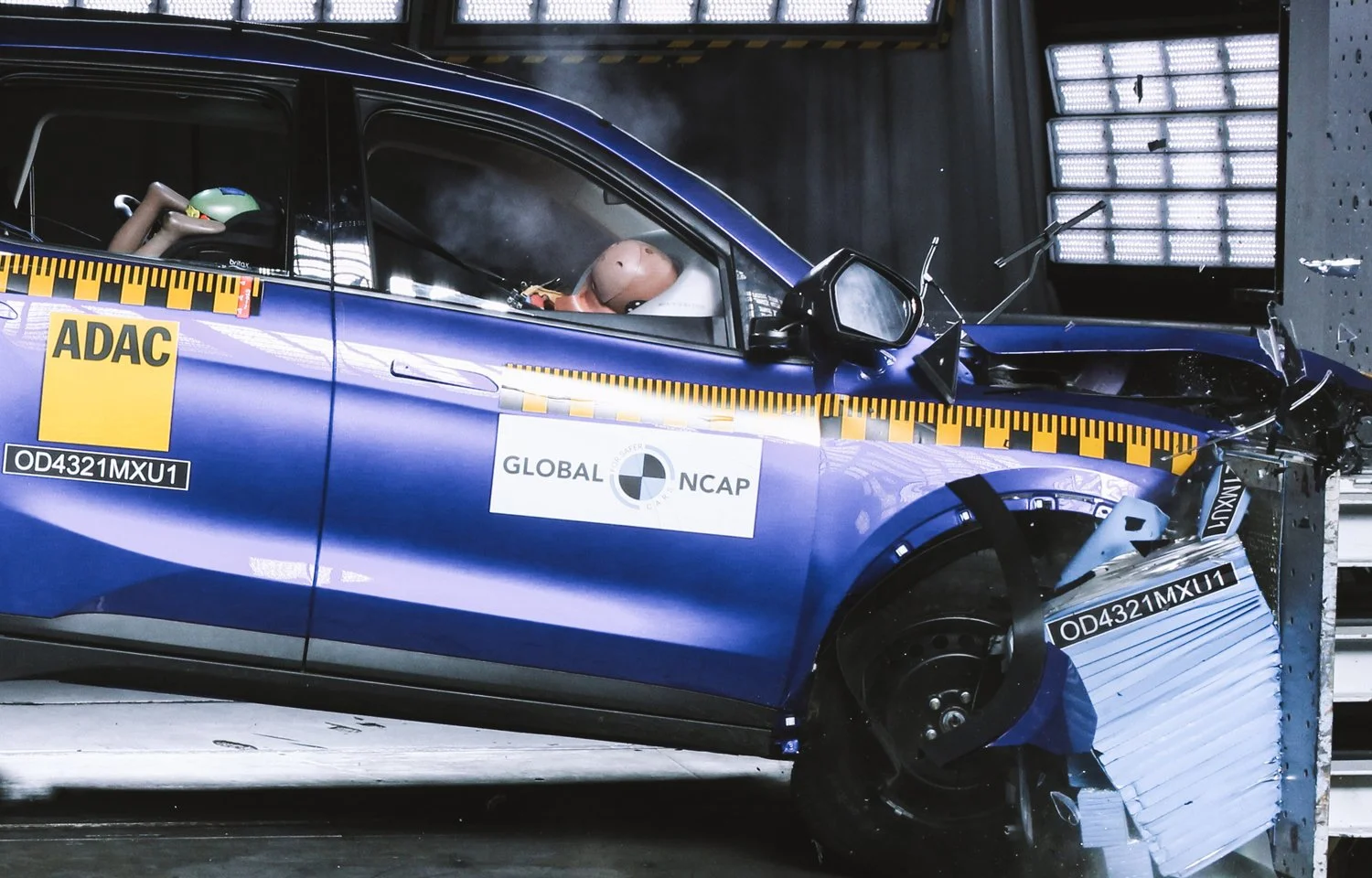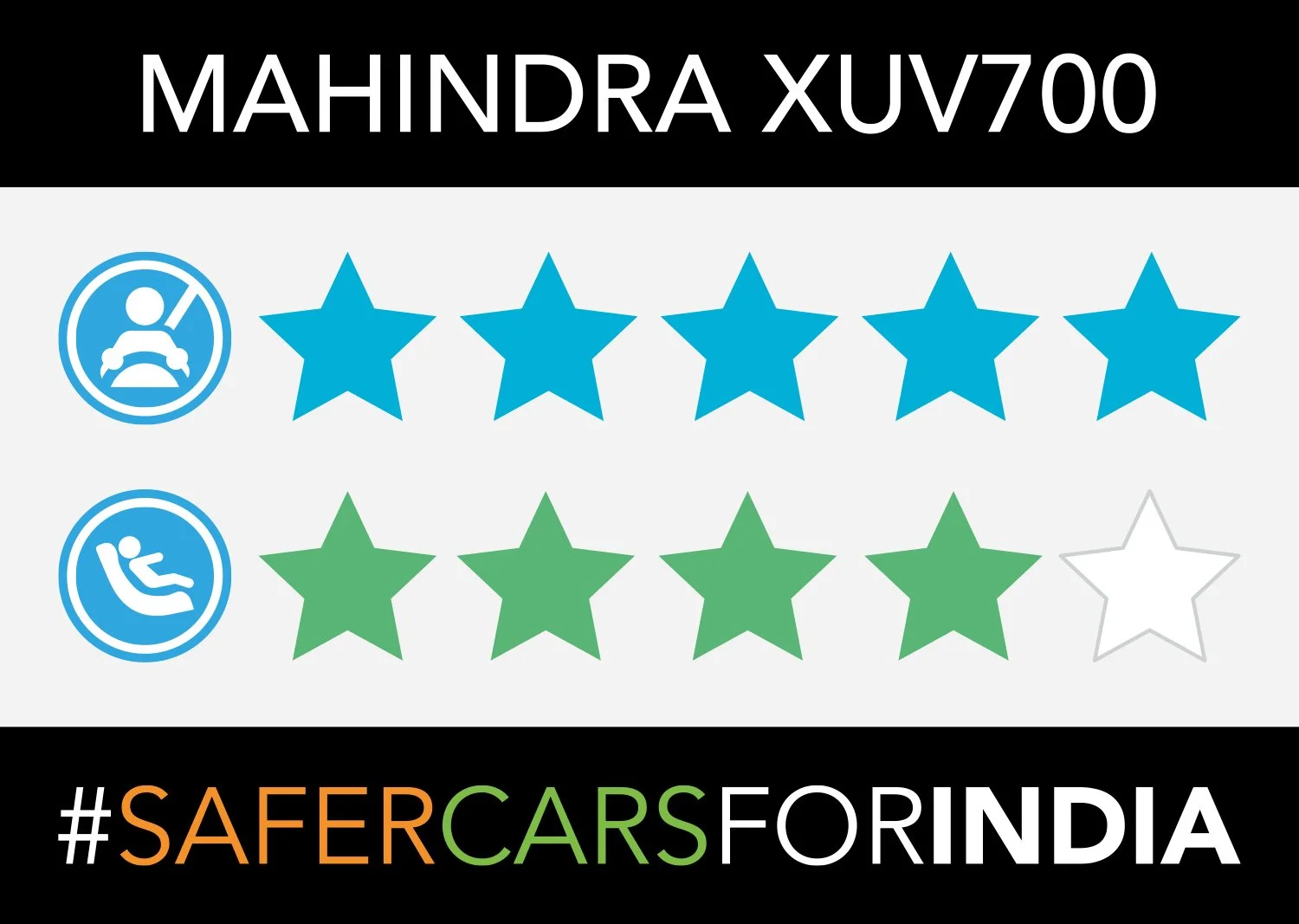High Five for Mahindra XUV700
Mahindra’s latest SUV achieved five stars for adult occupant and four stars for child occupants in Global NCAP’s latest #SaferCarsForIndia crash tests.
The recently launched Mahindra XUV700 was tested in the most basic safety specification, fitted with two airbags, ABS brakes and ISOFIX anchorages. The XUV700 could be improved by making standard its optional equipment such as side body airbags, side head curtain airbags, Electronic Stability Control (ESC), and three point belts in all seating positions.
The XUV700 was tested in compliance with the requirements of Global NCAP’s voluntary test procedure. (*)
Alejandro Furas, Secretary General of Global NCAP said,
“Mahindra has achieved a major milestone with this top score for adult protection and by becoming the first Indian made and owned brand to offer Autonomous Emergency Braking (AEB) as a safety option. Making this life saving technology available is an important step in encouraging the widespread fitment of crash avoidance technologies. Mahindra is one of the leading manufacturers in India, committed to improving their vehicles in response to Global NCAP’s call to democratise vehicle safety.”
David Ward, President of the Towards Zero Foundation said,
“It’s very satisfying to see Mahindra demonstrating their ongoing commitment to vehicle safety with the five star performing XUV700. High levels of occupant protection for adults and children as well as the availability of AEB, the potentially life saving crash avoidance technology. These are important indicators of the Indian automotive market moving towards ever higher level of consumer awareness and demand for safety.”
MAHINDRA XUV700 (2 airbags)
Adult Occupant Protection
The protection offered to the driver and passenger's head, neck and chest was good. Driver and passenger’s knees showed good protection. Driver tibias showed adequate protection and passenger tibias showed adequate and good protection. The bodyshell and footwell area was rated as stable and they were capable of withstanding further loadings. The car offers standard Seatbelt Reminders (SBR) for driver and passenger. The UN95 test showed that the car could pass the requirements. All of the above explained the five stars for adult occupant protection
Child Occupant Protection
The child seat for the 3 year old and 1.5 year old were installed rearward facing with ISOFIX anchorages and support leg. Both were able to prevent head exposure during the impact. Child Restraint System (CRS) marking was ok. The recommended CRSs did not show incompatibility. The vehicle offers lapbelt in the rear centre position. All of the above explained the four star for child occupant protection.
Read the full crash test report
Watch the crash test video
Download crash test image
Note to Editors
Safer Cars For India Campaign
The #SaferCarsForIndia Campaign was launched by Global NCAP in 2014 with the objective of promoting safer vehicles in the country. Between 2014 and 2021 Global NCAP has completed more than forty-six safety assessments which have acted as an important catalyst in the safety improvement of Indian cars. www.globalncap.org
Global NCAP is a major programme of the Towards Zero Foundation, a UK based charity working internationally in support of the new UN Decade of Action for Road Safety, with a goal of halving road deaths and serious injuries by 2030.
(*) Voluntary Test Procedure
Manufacturer reaches out to Global NCAP with a request to submit a model for voluntary testing.
Global NCAP selects the vehicle for testing. If the model is already in the market, the vehicle is sourced anonymously from a random dealership. If the model is pre launch but in production, Global NCAP makes an independent selection from production vehicles at the plant (not accepting any special series).
Vehicles are sealed and transported to an accredited crash test laboratory.
Global NCAP informs the manufacturer of relevant VIN numbers selected and invites representatives to observe testing.
Crash tests are performed and a detailed technical inspection completed.
Global NCAP shares the test report with the manufacturer.
A one to one meeting is held with the manufacturer to inform them of the results.
Results are published through Global NCAP’s communication channels.
After publication, Global NCAP invoices the manufacturer for all relevant testing costs.
Global NCAP retains the right to audit any of the voluntary models tested.






